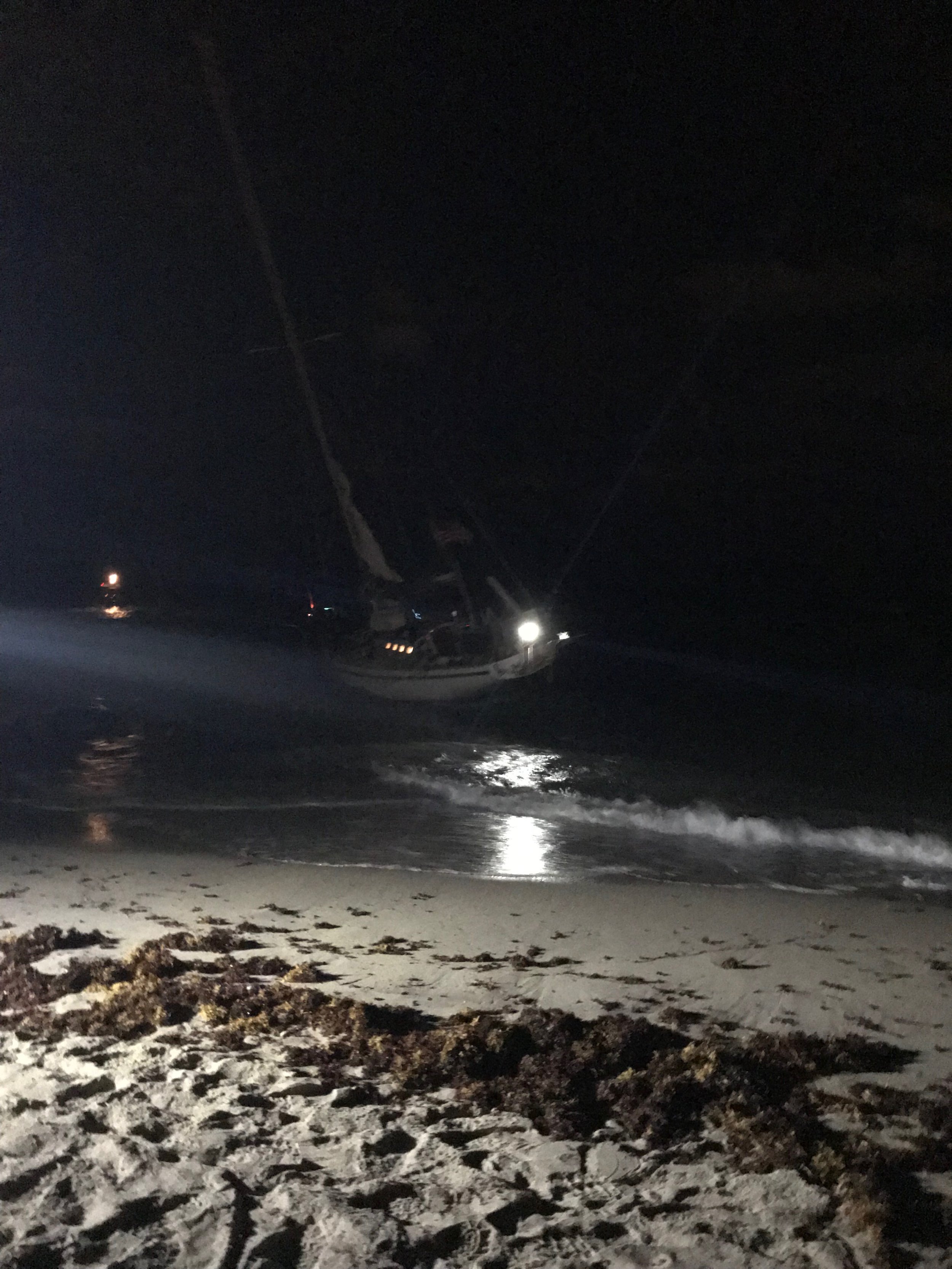Getting beached is a horrible experience. At the moment you contact the shore, a million thoughts will run through your head. Cloudy minds can lead to poor judgements, and that can cost you your boat!
When you run aground, hopefully on a soft sandy beach in calm weather, there are a few things you need to do to save your yacht.
First, you need to seal up any point that water can seep into your boat and cause it to sink. This means you need to close and dog down all your hatches and portholes. Dorade vents work well to let air in and keep water out when the boat is sitting at its usual angles, but when you beach, you might be heeled over so far that they fail to drain and will allow water to enter. You want to seal up any of these openings and replace them with their sealing plates. Solar fans are also a nice way for water to pour in and flood your yacht while you sit careened.
Second, you need to protect the yacht from the surf. The pounding waves on the hull will not break your yacht, but the pounding of your hull on the shore will. Each wave that passes will lift your boat a bit as the wave comes in, and then drop you on your side as the wave goes out. If the waves are big enough, the force of the fall can cause your hull to crack and you will sink!
So, you need to get out of the surf, and the best way to do this is to beach your boat as far up on the beach as you can! It might seem smart to drop your sails immediately, but don't! You want to use the wind that is blowing you ashore, along with the waves that are picking you up and carrying you onto the high sands.
The storm is going to get your boat up on the beach, this is inevitable. The trick is to get your boat up there without breaking the hull! Keeping your sails up will beach you faster and minimize the number of hits you will need to take in getting there.
Once you are up on the beach, the waves that will reach you will not be strong enough to lift your hull and drop you again. Instead, these waves will simply crash onto your boat like if you were a boulder on the beach. At this point, you can stop worrying about the hull cracking and focus more on keeping water out of the boat.
Water intrusion will still be a critical issue, even up on the beach. Spray and surf can fill your hull and cause you to sink on dry land. It is best to try and orient the boat in a manner that will save your yacht in this disaster.
Third, if you have a fin keel or full keel, try to orient yourself so that your deck is facing the shore and your keel is facing the surf. Breaking waves will smack the underside of your boat which is well sealed and waterproof. The deck will be spared this bombardment of waves and all your portholes and hatches will only have to deal with attenuated spray.
If you have a long keel, try to beach bow into the shore. The keel will raise the stern out of the water and breaking waves will pass under the stern. The rudder and keel will also help cut the waves as they pass under the boat.
Deck orientation is very important, but there is one caveat: Length of stay. If you are going to be rescued promptly, you want to orient your deck to the surf no matter what. Seal everything up and pump out any water that comes in. If you are going to be there for a while, point your deck towards shore.
The reason is, when they pull you off the beach, they will pull your bow into the water. The keel will act as a break and you risk rising up and tipping over on your keel. This hard smash can crack your hull and destroy your yacht. So, if you are going to be rescued very soon, put your deck towards the water so that you are already in the orientation to pull you in and you won't need to tip over.
First and foremost, avoid running onto the shore. If you do, then follow these steps to save your yacht. The quicker you act on these basic principles, the better the outcome will be.








